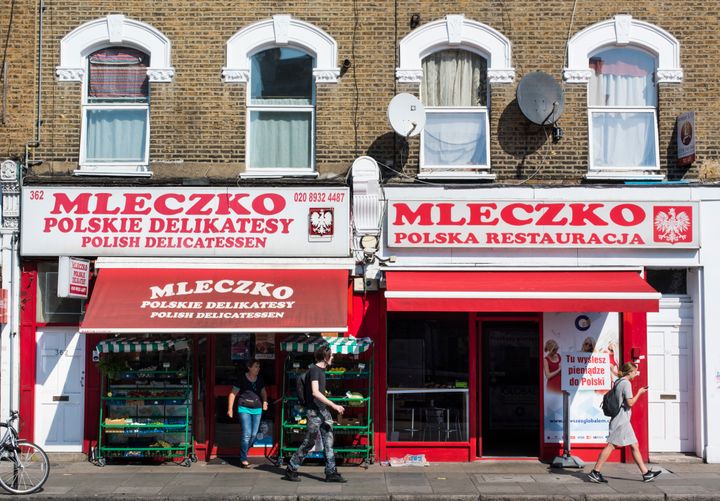
Immigration to the UK from the European Union has fallen to the lowest level in five years, new figures show.
An estimated 201,000 EU nationals moved to the UK with an intention to stay 12 months or more in 2018, Office for National Statistics (ONS) figures showed.
This was the lowest inflow from the bloc since 2013, when it also stood at 201,000.
Figures for the last quarter of 2018 showed the number of EU citizens arriving in the UK to stay long-term remained stable, but fewer people left, prompting the biggest rise in net long-term EU migration since 2016.
With around 127,000 EU citizens emigrating, net long-term EU migration – the balance of those arriving and departing – stood at 74,000, a 17,000 increase when compared with the previous year.
The past six months have seen continued uncertainty about Brexit and the type of deal Britain may secure as it withdraws from the bloc.
But despite the slight uptick, the figures are still well below net long-term EU migration in the 12 months to the June 2016 referendum, which stood at 189,000.
Meanwhile, immigration from countries outside the EU has gradually increased over the last five years to similar levels seen in 2011, the ONS said.
Overall net international migration was estimated at 258,000 last year – down from 285,000 in 2017 – but still well above the government’s target level of under 100,000.
It is the 37th time the government has missed its target to reduce net migration to the “tens of thousands” since the pledge was first made in 2010.
But the immigration minister, Caroline Noakes, said net migration continued to be stable and that leaving the EU would mean the UK would have “greater control over who comes here”.
Jay Lindop, director of the ONS centre for international migration, said: “Our analysis of the available data suggests that long-term net migration, immigration and emigration figures have remained broadly stable since the end of 2016.”
EU net migration has decreased since mid-2016 following a period of increase, while non-EU net migration has gradually been increasing since 2013, standing at an estimated 232,000 last year, the ONS report said.
It added: “However, both EU and non-EU citizens continue to add to the population, while more British citizens leave long-term than return.”
Theresa May, who announced her resignation as prime minister on Friday, has remained in favour of the target.
But the home secretary, Sajid Javid, has refused to commit to a specific figure, saying instead that the government’s aim is to bring migration down to “sustainable levels”.
Sunder Katwala, director of think-tank British Future, said: “These will be Theresa May’s final immigration statistics as a prime minister and home secretary who placed the net migration target at the centre of the Government’s immigration policy.
“But the net migration target was a promise to voters that could never be kept.”
Madeleine Sumption, director of the Migration Observatory at the University of Oxford, said: “It’s clear that the UK has become less attractive for EU citizens over the past few years, whether because of the lower value of the pound or the uncertainty around Brexit.
“But Brexit doesn’t seem to have put off non-EU migrants: the UK continues to be a top destination for international students and skilled workers from outside the EU.”
Immigration Minister Caroline Nokes added: “These figures show that the UK is continuing to attract skilled workers like doctors and nurses, who play a vital role in supporting our communities and boosting our economy.”
